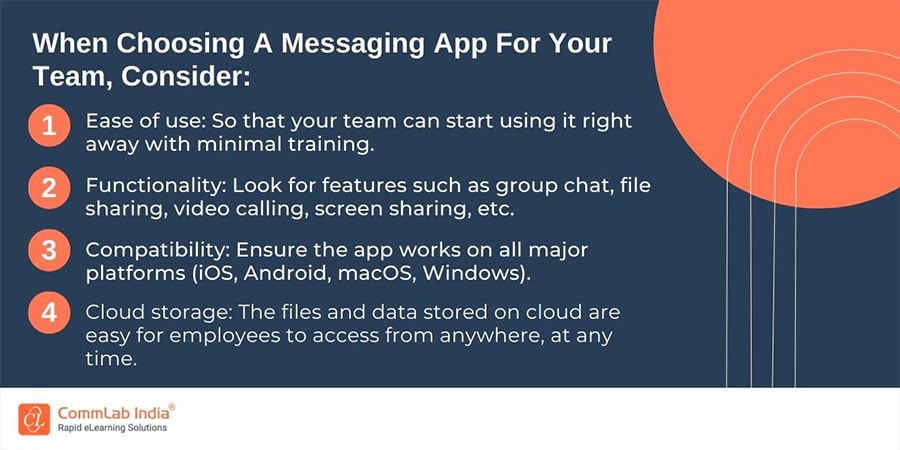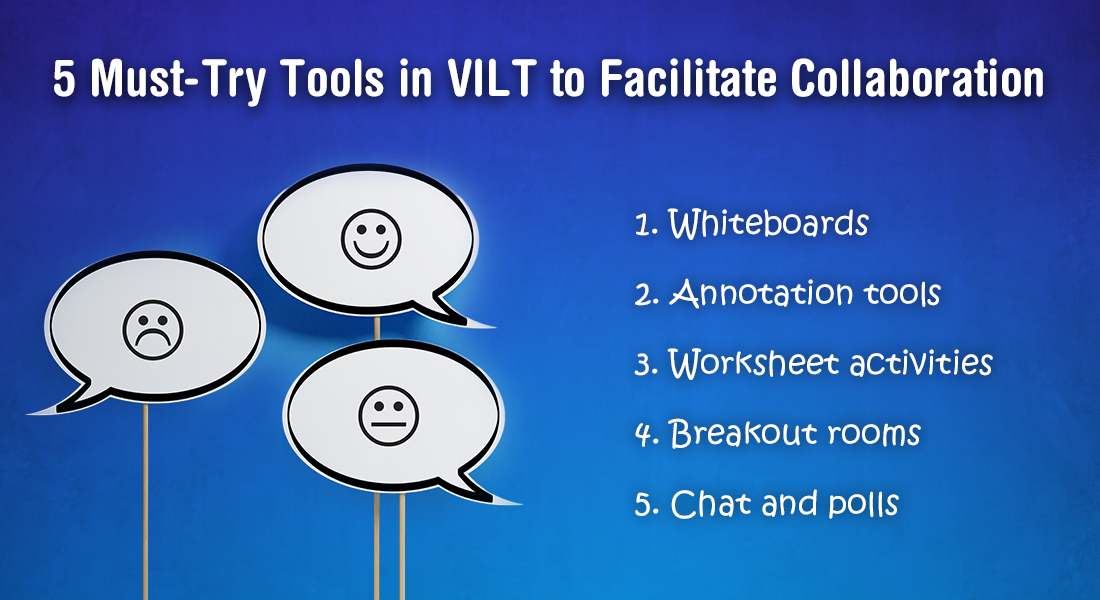4 VILT Tools for Effective Communication When Training a Remote Workforce
Virtual Instructor-Led Training (VILT) tools have emerged as a valuable solution for engaging and training remote teams. But do you know about the different options available? Continue reading to explore four VILT tools that can help you effectively communicate with your remote workforce…

The shift to remote working, though very flexible, can be challenging especially in terms of effective communication. The confusion further leads to confusion and misaligned expectations within the teams. And the impact can also be seen when training your remote workforce, and that is where virtual instructor-led training (VILT) enters!
Virtual Instructor-Led Training (VILT) serves as an approach to train employees using digital media. While this approach suits best to train remote teams, communication is key when building and delivering VILT sessions.
This post introduces you to 4 essential tools that you need to master communication when training your remote workforce.
Let’s dive in!
Looking For VILT Tools To Communicate Effectively With Your Remote Workforce?
Here are a few options –
- Video Conferencing
- Learning Management System (LMS)
- Employee/Team Messaging App
- Virtual Classroom Tool
Why is Effective Communication Important When Training a Remote Workforce?
Communication is key in any workplace, but it is, in a way, supreme when training a remote workforce.

Now that we understand the importance of training in communication, let us understand more about VILT tools:
What are VILT Tools?
As already discussed, VILT (virtual instructor-led training) is an online training approach and involves the use of digital media to connect with teams virtually. It involves the participants engaging in live, interactive learning sessions with an instructor using virtual platforms. And VILT tools are the different platforms and tools that facilitate this virtual communication.
There are many different VILT tools such as web conferencing software, learning management systems (LMS), etc. let us discuss them in detail:
4 VILT Tools for Effectively Communicating When Training Remote Workers
Video Conferencing
Video conferencing platforms are among the top VILT tools for communication when training a remote workforce. Seeing and hearing the other person, and being able to interact back and forth helps ensure that the participants are engaged and involved in the training delivered. This type of conferencing can be very useful for providing feedback or direction during training sessions.
→ Download Now: Generating Motivation and Excitement in the Virtual Classroom [eBook]
Learning Management System (LMS)
An LMS is a software application that helps you plan, deliver, and track employee training. It can be used to create online courses, assign and track progress, and measure results.
With an LMS, you can:
- Design and launch online courses: The LMS can be used to create engaging, interactive course content. All you need to consider is the different learning styles of your employees. For instance, some employees may prefer visual aids while others might benefit from written instructions. So design the course accordingly.
- Assign courses to employees: Upon creation, assign the courses to employees based on their job role or department. Employees can access their assigned courses directly from the LMS.
- Track employee progress: The LMS tracks employee progress through each course. This allows you to see which employees are struggling and need additional support.
- Measure results: At the end of each course, employees take a quiz to test their knowledge. The results of these quizzes give you insights into the effectiveness of your training program.
Employee/Team Messaging App
There are a ton of different messaging apps to communicate and deliver training to your remote workforce. For instance, Microsoft Teams can be used to communicate and train employees. The platform allows video conferencing and also supports document sharing. Additionally, it is also possible to integrate other apps and use additional functionalities.
There are a number of applications available and in you are wondering what to choose, here are a few things to consider:

Virtual Classroom Tool
In order to facilitate effective communication when training a remote workforce, it is essential to utilize a reliable virtual classroom tool. A virtual classroom tool facilitates online learning and interaction in a virtual setting. These platforms features such as video conferencing, chat functionality, whiteboarding, screen sharing, etc, so they can simulate a physical classroom environment.
There are many different virtual classroom tools available on the market, so it is important to do your research and select the one that best meets the needs of your organization.
Some things to consider when selecting a virtual classroom tool include:
- Ease of use: The tool should be easy to use for both trainers and trainees. It should be intuitive and user-friendly.
- Functionality: The tool should offer all the features and functionality needed to support your training program.
- Reliability: The tool should be reliable and able to handle large numbers of users without crashing or experiencing other technical issues.
- Customer support: In case you experience any problems with the tool, it is important that customer support is available to help you resolve any issues in a timely manner.
Whatever VILT tool you choose, your primary intention is to drive learner engagement to replicate real-time learning scenario.
Here’s a video to help you:
Wrapping Up
Now that you know the VILT tools for effective communication when training a remote workforce, your next focus should be on having a process in place for delivering training content to your team. When delivering the training, it is key that you make the most of engagement activities so that the team is motivated to do it right.
Want to know how to keep you teams motivated during VILT sessions? This eBook can guide you..




